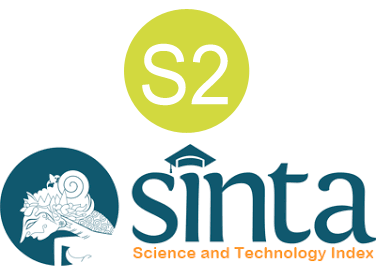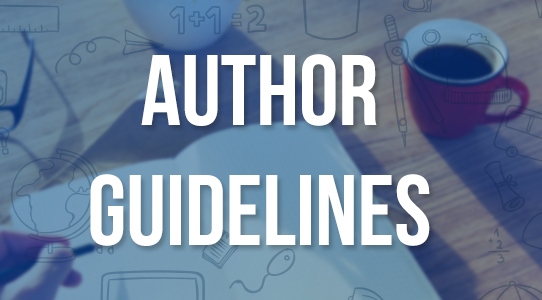The Creative Thinking Process of Students with Adversity Quotient Personality and Metacognition Level in Solving Open-Ended Problems Reviewed from the Information Processing Theory
DOI:
https://doi.org/10.37680/qalamuna.v17i2.7678Keywords:
Adversity Quotient; Creative Thinking; Information Processing Theory; Level of Metacognition; Open-EndedAbstract
The issue of creative thinking encompasses various contexts, including those about Adversity Quotient students, necessitating further elucidation of the problem to ascertain students' metacognitive levels. This research constitutes a qualitative descriptive exploratory study aimed at delineating the creative thinking process of students, with a focus on students' Adversity Quotient and metacognition levels, as examined through the lens of information processing theories. The study participants were 29 students from the 11th grade of SMA. The research methodology involved administering tests to students, with subsequent analysis of the results utilizing the exploratory descriptive method, wherein the researcher categorized students based on their Adversity Quotient and metacognition levels. Data collection in this study employed instruments in the form of open-ended questions and interview guidelines. Initial test results revealed that seven students could provide comprehensive answers to the questions, nine offered partial responses, and 13 did not respond. Further analysis of the test results indicated that one subject classified as the "climbers" type exhibited the reflective use level of metacognition, one subject of the "campers" type demonstrated the semi-reflective use level of metacognition, and one subject of the "quitters" type displayed the tacit use level of metacognition.
References
Amaliyah, A., Wahyuni, H. D., Nura, S. A., & Sahidah, N. (2022). Analysis Of Students’ Ability In Completing Operations Of Summarizing and Reduction Of Integer Numbers. Progres Pendidikan, 3(2), 108–111.
Arifin, S., Putri, R. I. I., & Hartono, Y. (2021). On Creativity through Mathematization in Solving Non-Routine Problems. Journal on Mathematics Education, 12(2), 313–330.
Arilaksmi, N. P. G., Susiswo, S., & Sulandra, I. M. (2021). Kemampuan berpikir kreatif mahasiswa pendidikan matematika dalam memecahkan masalah open-Ended trigonometri. JIPM (Jurnal Ilmiah Pendidikan Matematika), 9(2), 46–58.
Ayuningtyas, W., Triyono, A., Marhaeni, N. H., & Ramos, S. V. (2023). The Effectiveness of Model Eliciting Activities on Increasing Mathematical Creative Thinking. IndoMath: Indonesia Mathematics Education, 6(1), 11–24.
Cahyati, V. I., & Siswono, T. Y. E. (2022). Proses berpikir kreatif siswa smp dalam memecahkan masalah numerasi ditinjau dari adversity quotient (Aq). Jurnal Cendekia, 6(1), 748–760.
Damayanti, R., Yuliati, N., Karimah, R., & Albab, A. U. (2020). Students’ metacognitive ability in solving quadrilateral problems based on the adversity quotient. Journal of Physics: Conference Series, 1538(1), 12077.
Febriani, S., & Ratu, N. (2018). Profil proses berpikir kreatif matematis siswa dalam pemecahan masalah open-ended berdasarkan teori Wallas. Mosharafa: Jurnal Pendidikan Matematika, 7(1), 39–50.
Gagné, R. M. (1985). The conditions of learning and the theory of instruction.
Glasser, L., & Doerfler, R. (2019). A brief introduction to nomography: graphical representation of mathematical relationships. International Journal of Mathematical Education in Science and Technology, 50(8), 1273–1284.
Grégoire, J. (2016). Understanding creativity in mathematics for improving mathematical education. Journal of Cognitive Education and Psychology, 15(1), 24–36.
Gunawan, G., Ferdianto, F., Mulyatna, F., & Untarti, R. (2025). The Profile of Creative Thinking Process: Prospective Mathematics Teachers. JURNAL EDUSCIENCE, 12(2), 450–464.
Hélie, S., & Sun, R. (2010). Incubation, insight, and creative problem solving: a unified theory and a connectionist model. Psychological Review, 117(3), 994.
Huda, S., Agustin, D., & Khikmiyah, F. (2021). Karakteristik metakognisi dalam pemecahan masalah matematika ditinjau dari tipe kepribadian. Mathematics Education And Application Journal (META), 3(1), 20–34.
Kholid, M. N., Mahmudah, M. H., Ishartono, N., Putra, F. G., & Forthmann, B. (2024). Classification of students’ creative thinking for non-routine mathematical problems. Cogent Education, 11(1), 2394738.
Lucas, B. (2022). Creative thinking in schools across the world. London: The Global Institute of Creative Thinking.
Ma’ruf, A. H., Triyono, A., & Ismail, M. R. (2023). Improving Students’ Mathematical Problem-Solving Ability in Trigonometry Material Using the Flipped Classroom Model. Journal of Instructional Mathematics, 4(2), 106–118.
Mumford, M. D., Giorgini, V., Gibson, C., & Mecca, J. (2013). Creative thinking: Processes, strategies, and knowledge. In Handbook of research on creativity (pp. 249–264). Edward Elgar Publishing.
Munir, N. P., Anas, A., Mursalin, N. R., & Natsir, I. (2021). Development of Mathematics Student Worksheets Through the Approach Model Eliciting Activities (MEAs) on the Triangle Material. Journal of Physics: Conference Series, 1940(1), 12097.
Nugraheni, Z., Budiyono, B., & Slamet, I. (2018). Upgrading geometry conceptual understanding and strategic competence through implementing rigorous mathematical thinking (RMT). Journal of Physics: Conference Series, 983(1), 12121.
Palwa, N., Inayah, S., Septian, A., & Larsari, V. N. (2024). Analysis of Students’ Mathematical Creative Thinking Ability in Solving Open-Ended Questions Based on Their Self-Concept. International Journal of Mathematics and Mathematics Education, 2(1), 60–73.
Purwasih, R. (2019). Kemampuan berpikir kreatif matematis siswa SMP dalam menyelesaikan soal pemecahan masalah di tinjau dari adversity quotient tipe climber. AKSIOMA: Jurnal Program Studi Pendidikan Matematika, 8(2), 323–332.
Revenko, I., Hlianenko, K., Sosnova, M., Vlasenko, R., & Kolodina, L. (2024). Exploring pedagogical approaches and methods designed to stimulate students' creative thinking. Cadernos de Educação, Tecnologia e Sociedade, 17(se1), 137–146.
Ruayruay, E., Kirtikara, K., Nopharatana, M., Chomsuwan, K., & Suwannathep, S. (2020). Work-Integrated Learning Competencies: A Case Study in a Food Engineering Practice School Program. International Journal of Instruction, 13(2), 707–720.
Rusdyi, R., Saleh, R. R. M., & Nur, I. M. (2023). Proses Berpikir Kreatif Siswa Berkepribadian Adversity Quotient dalam Menyelesaikan Masalah Open-Ended Ditinjau dari Teori Pemrosesan Informasi. JURNAL PENDIDIKAN MIPA, 13(3), 851–862.
Şahin, Ş., & Kılıç, A. (2024). Comparison of the effectiveness of project-based 6E learning and problem-based quantum learning: Solomon's four-group design. Journal of Research in Innovative Teaching and Learning. https://doi.org/10.1108/JRIT-09-2023-0139
Saleh, R. R. M., & Nur, I. M. (2023). Proses Berpikir Siswa SMP Berdasarkan Gaya Kognitif Intuitif dan Sistematis dalam Menyelesaikan Masalah Invers Proporsi Ditinjau dari Teori Pemrosesan Informasi. Jurnal Pendidikan MIPA, 13(3), 751–762.
Schmoelz, A. (2018). Enabling co-creativity through digital storytelling in education. Thinking Skills and Creativity, 28, 1–13.
Seridi, H., Lafifi, Y., & Gouasmi, N. (2012). CLAS: a Collaborative learning awareness system. Procedia-Social and Behavioral Sciences, 31, 480–485.
Stoltz, P. G. (1999). Adversity quotient: Turning obstacles into opportunities. John Wiley & Sons.
Sukma, S., Juniati, J., Nirmayanti, N., & Bismawati, A. (2024). The Implementation of Affective Assessment on Indonesian Language Learning based on the Students’ Character Education. 4th International Conference on Linguistics and Culture (ICLC-4 2023), 87–92.
Suryaningrum, C. W., Susanto, H., Ningtyas, Y. D. W. K., & Irfan, M. (2020). Semiotic Reasoning Emerges in Constructing Properties of a Rectangle: A Study of Adversity Quotient. Journal on Mathematics Education, 11(1), 95–110.
Suryaningtyas, S., & Setyaningrum, W. (2020). Analisis kemampuan metakognitif siswa SMA kelas XI program IPA dalam pemecahan masalah matematika. Jurnal Riset Pendidikan Matematika, 7(1), 74–87.
Tindowen, D. J. C., Bassig, J. M., & Cagurangan, J.-A. (2017). Twenty-first-century skills of alternative learning system learners. Sage Open, 7(3), 2158244017726116.
Triyono, A. (2019). Inquiry-Based Worksheet Design To Improve Critical Thinking Of Students In Indonesia. Int. J. Sci. Technol. Res, 8, 1183–1187.
Triyono, A., Nuary, R. H., Permatasari, N., Yuni, Y., & Wibowo, T. (2024). The level of effectiveness of TPS and conventional methods, judging from students’ geometry learning results using the N-Gain Test. AlphaMath: Journal of Mathematics Education, 10(1), 142–156.
Tselykh, M. (2019). Communication and information technologies in preparing students for research work. International Journal of Media and Information Literacy, 4(2), 60–65.
Wang, Y., & Chiew, V. (2010). On the cognitive process of human problem solving. Cognitive Systems Research, 11(1), 81–92.
Windasari, A. D., & Cholily, Y. M. (2021). Analisis kemampuan berpikir kreatif siswa memecahkan masalah HOTS dalam setting model kooperatif jigsaw. Jurnal Cendekia: Jurnal Pendidikan Matematika, 5(1), 623–631.
Wulandari, D. P., Susiswo, S., & Sulandra, I. M. (2021). Proses Kemampuan Berpikir Kreatif Siswa Matematika Berdasarkan Masalah Open-Ended pada Materi Bangun Datar. Jurnal Cendekia, 5(3), 2198–2207.
Wulandari, H. T., Purnomo, E. A., & Mawarsari, V. D. (2024). Kemampuan Pemecahan Masalah Matematis Ditinjau dari Pikiran Pseudo: Systematic Literature Review (SLR). Jiip-Jurnal Ilmiah Ilmu Pendidikan, 7(2), 1352–1359.
Downloads
Published
How to Cite
Issue
Section
License
Copyright (c) 2025 Rusdyi Habsyi, Asmira Sudiman, Muhammad Ikram, Rusmin R.M. Saleh, Ageng Triyono, Karman La Nani

This work is licensed under a Creative Commons Attribution-ShareAlike 4.0 International License.
Authors who submit manuscript retain its copyright and grant publisher right of first publication licensed under a Creative Commons Attribution-ShareAlike 4.0 International License (CC BY-SA 4.0) that allows others to access (search, read, download, and cite), share (copy and redistribute the material in any medium or format) and adapt (remix, transform, and build upon any material) the work for any lawful purpose, even commercially with an acknowledgement of the work's authorship and initial publication in Qalamuna: Jurnal Pendidikan, Sosial, dan Agama.











